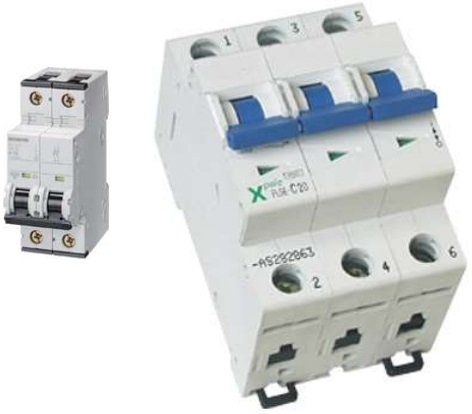What is an ELCB?
An Earth Leakage Circuit Breaker (ELCB) is a safety device used in electrical installations with high earth impedance to prevent shock. It detects small stray voltages on the metal enclosures of electrical equipment, and interrupts the circuit if a dangerous voltage is detected. Once widely used, more recent installations instead use residual current circuit breakers which instead detect leakage current directly. The main purpose of earth leakage protectors or elcb is to prevent injury to humans and animals due to electric shock.
Usage of Earth Leakage Circuit Breakers ELCB
ELCB is used for the protection against electrical leakage in the circuit. When somebody gets an electric shock or the residual current of the circuit exceeds the fixed value, ELCB cuts off the power within the time of 0.1s automatically protecting the personal safety and preventing the equipment from the fault. ELCB also protect the circuit against over load and short-circuit.
An Earth Leakage Circuit Breaker ELCB is a specialized type of latching relay that has a building’s incoming mains power connected through its switching contacts so that the ELCB disconnects the power in the case of detection of earth leakage i.e. any unsafe of short circuit condition. The ELCB detects fault currents from live to the earth (ground) wire within the installation it protects. If sufficient voltage appears across the ELCB’s sense coil, it will switch off the power, and remain off until manually reset or turned on again. A voltage-sensing ELCB does not sense fault currents from live to any other earthed body.

There are two types of ELCB:
- Voltage operated
- Current operated.
Advantages of ELCB
ELCBs have one advantage over RCD’s i.e they are less sensitive to fault conditions, and therefore have fewer nuisance trips. (This does not mean they always do, as practical performance depends on installation details and the discrimination enhancing filtering in the ELCB.)
Therefore by electrically separating cable armour from the cable circuit protective conductor, an ELCB can be arranged to protect against cable damage only, and not trip on faults in down-line installations.
Disadvantages of ELCB
ELCB’s do not detect faults that don’t pass current through the CPC to the earth rod. They do not allow a single building system to be easily split into multiple sections with independent fault protection, because earthing systems are usually bonded to pipe work. They may be tripped by external voltages from something connected to the earthing system such as metal pipes, a TN- S earth or a TN-C-S combined neutral and earth. As with RCDs, electrically leaky appliances such as some water heaters, washing machines and cookers may cause the ELCB to trip. ELCBs introduce additional resistance and an additional point of failure into the earthing system.
Discover more from Electrical Engineering 123
Subscribe to get the latest posts sent to your email.

